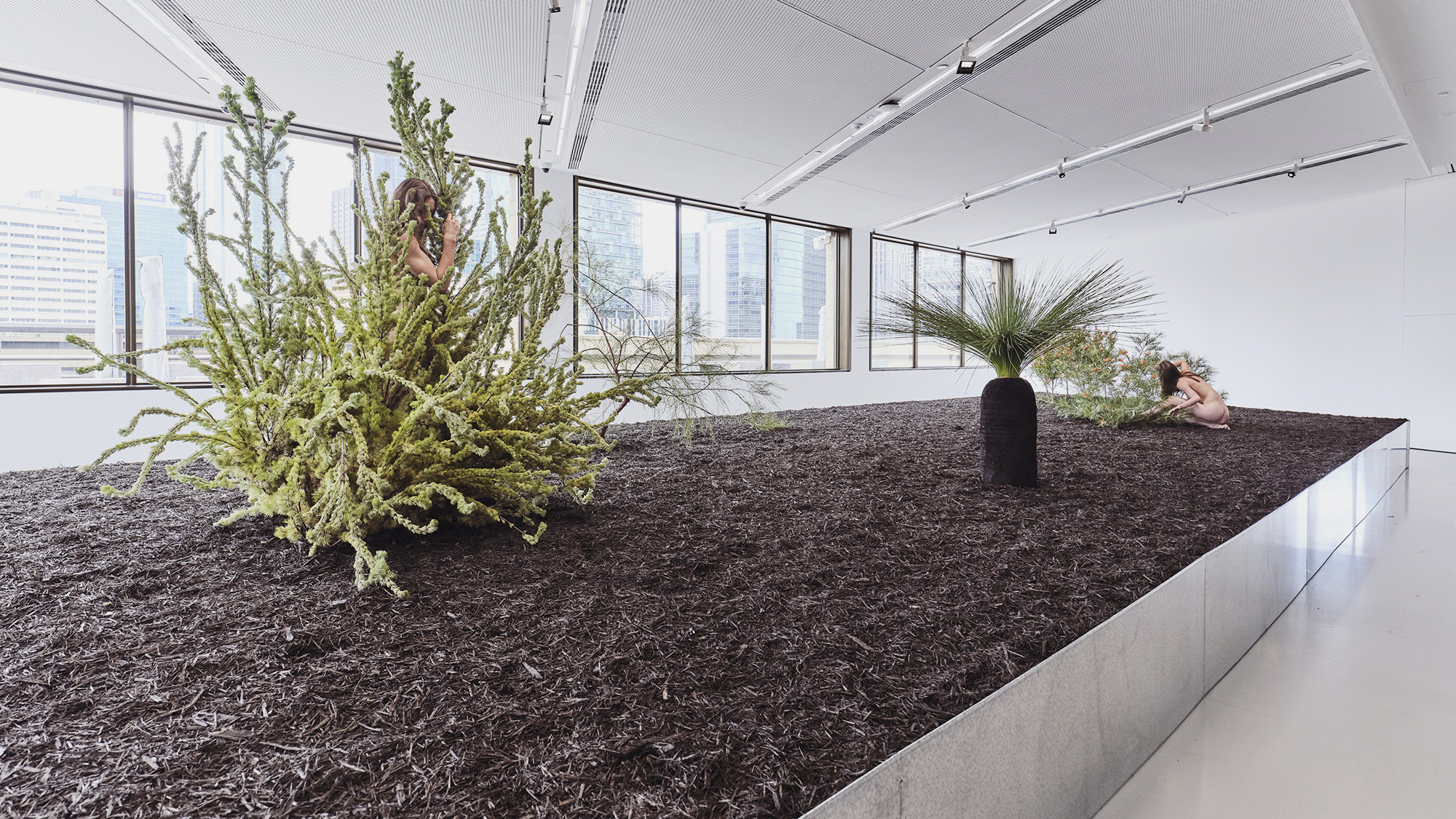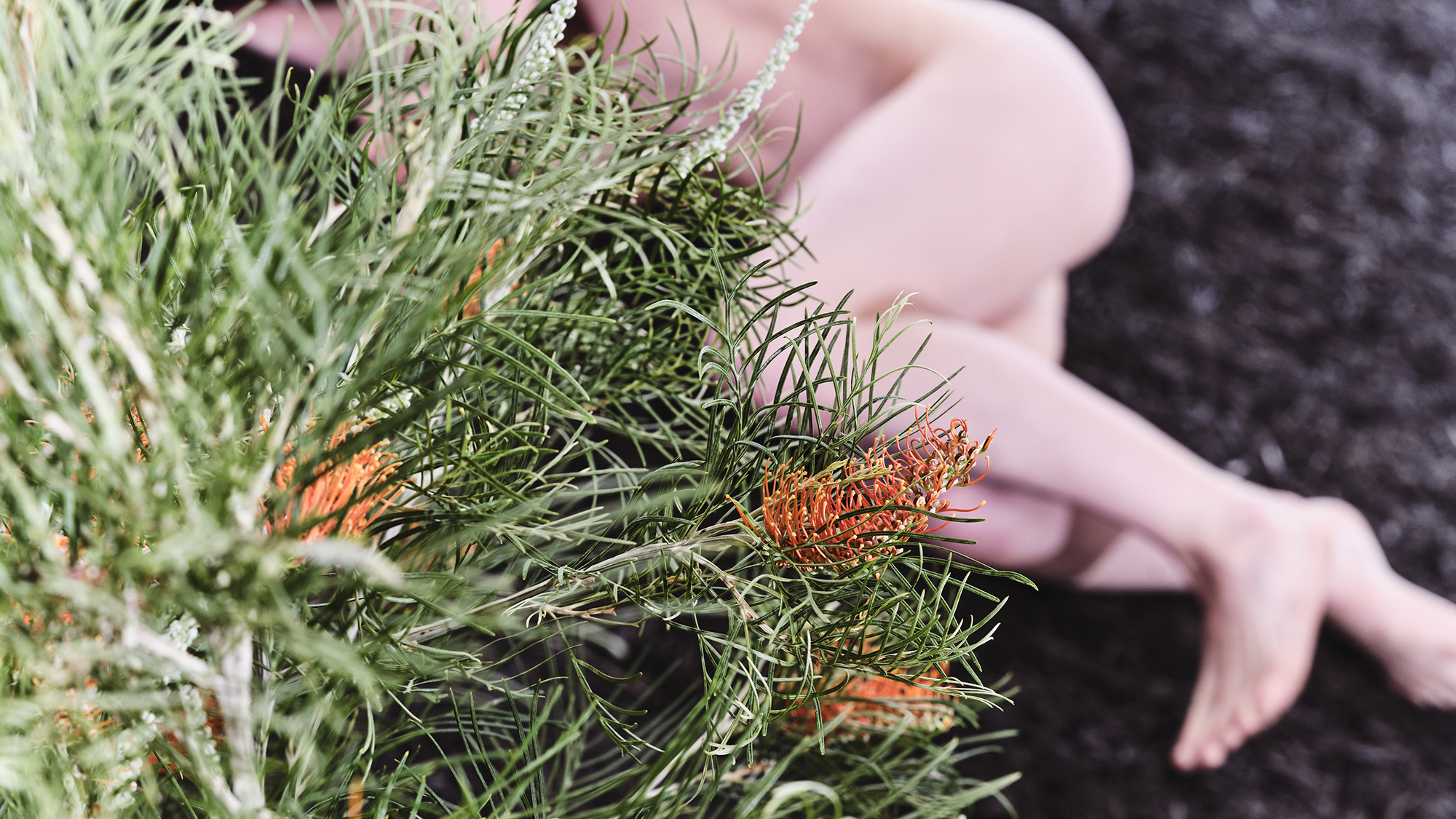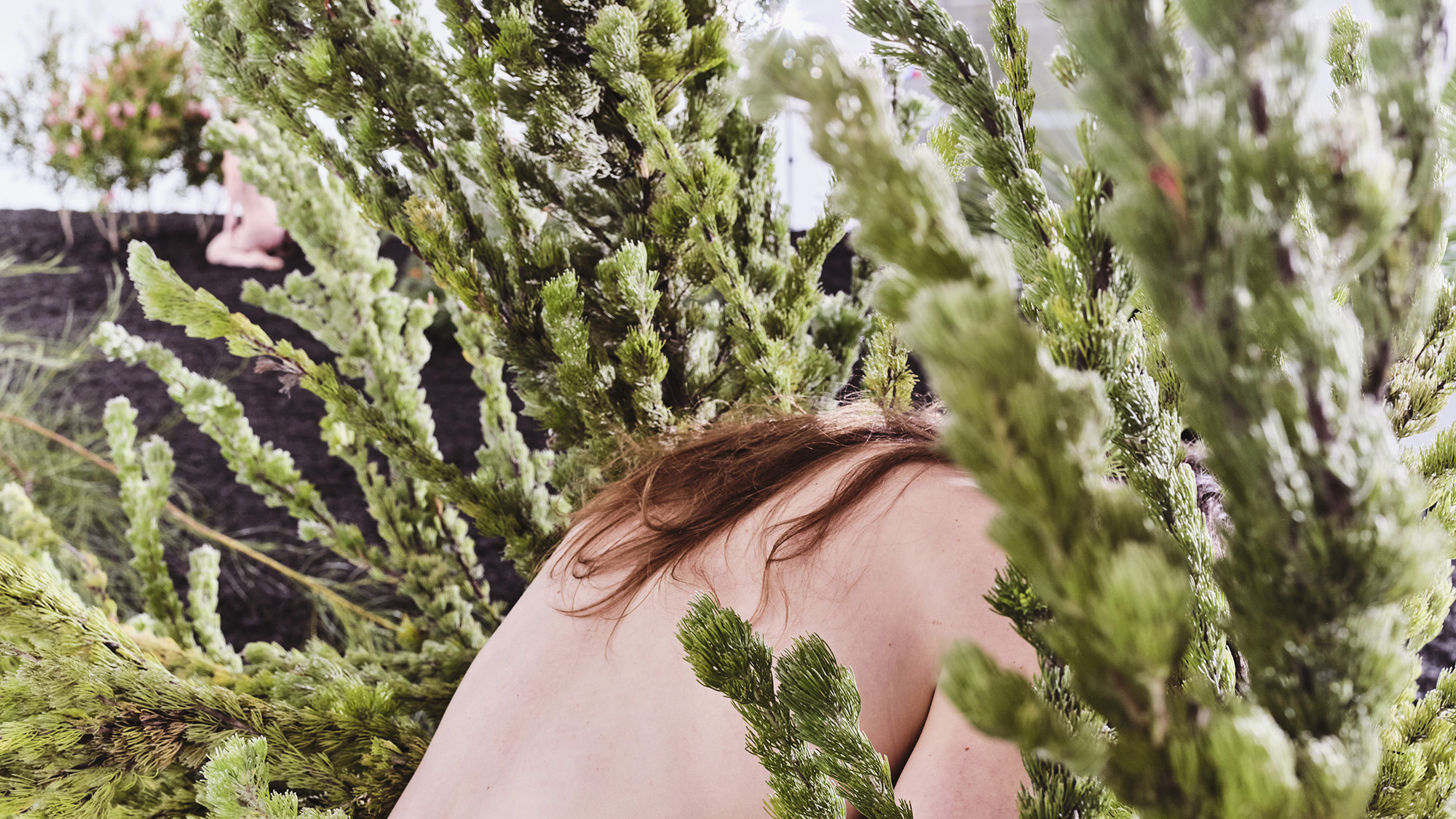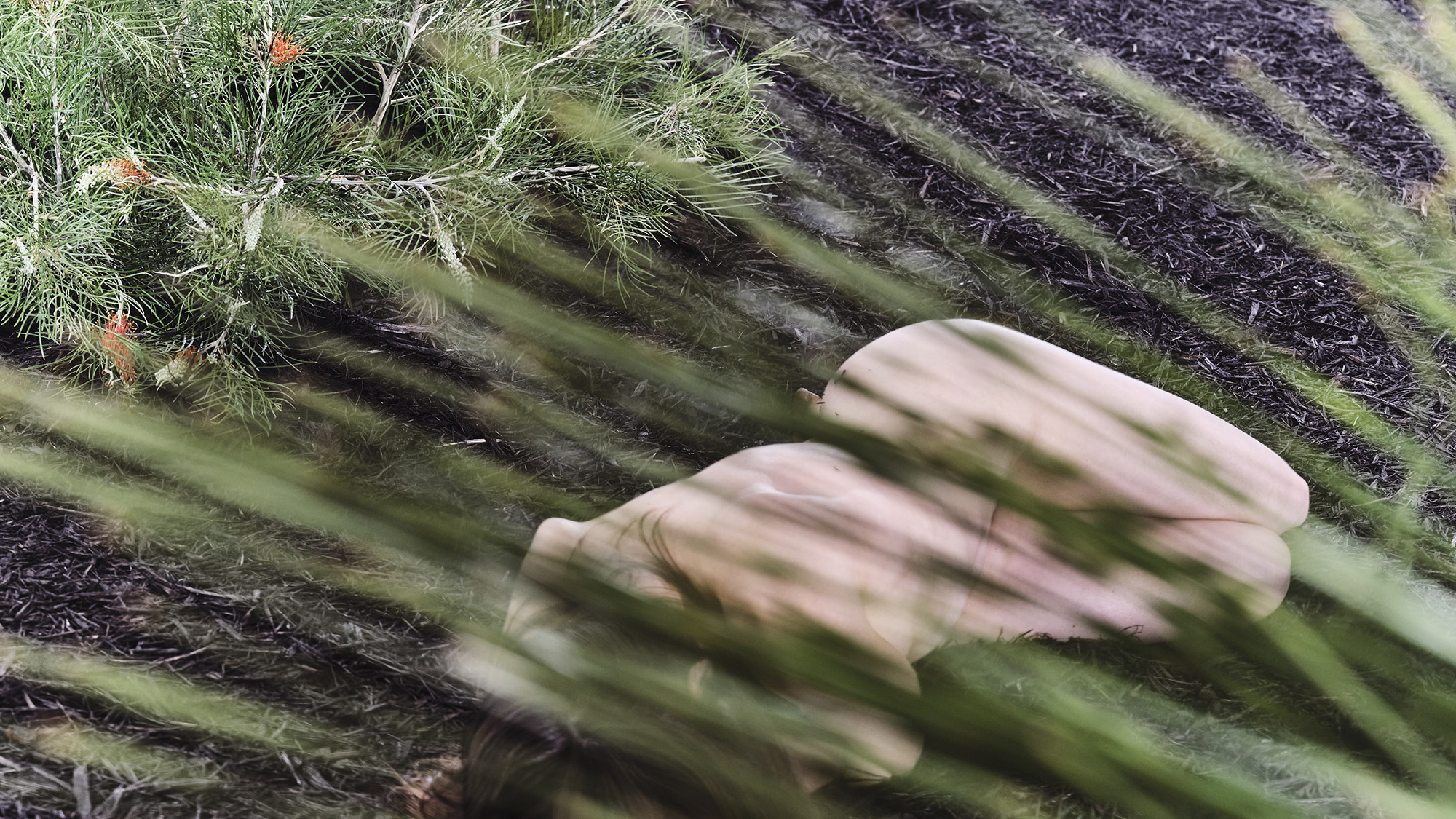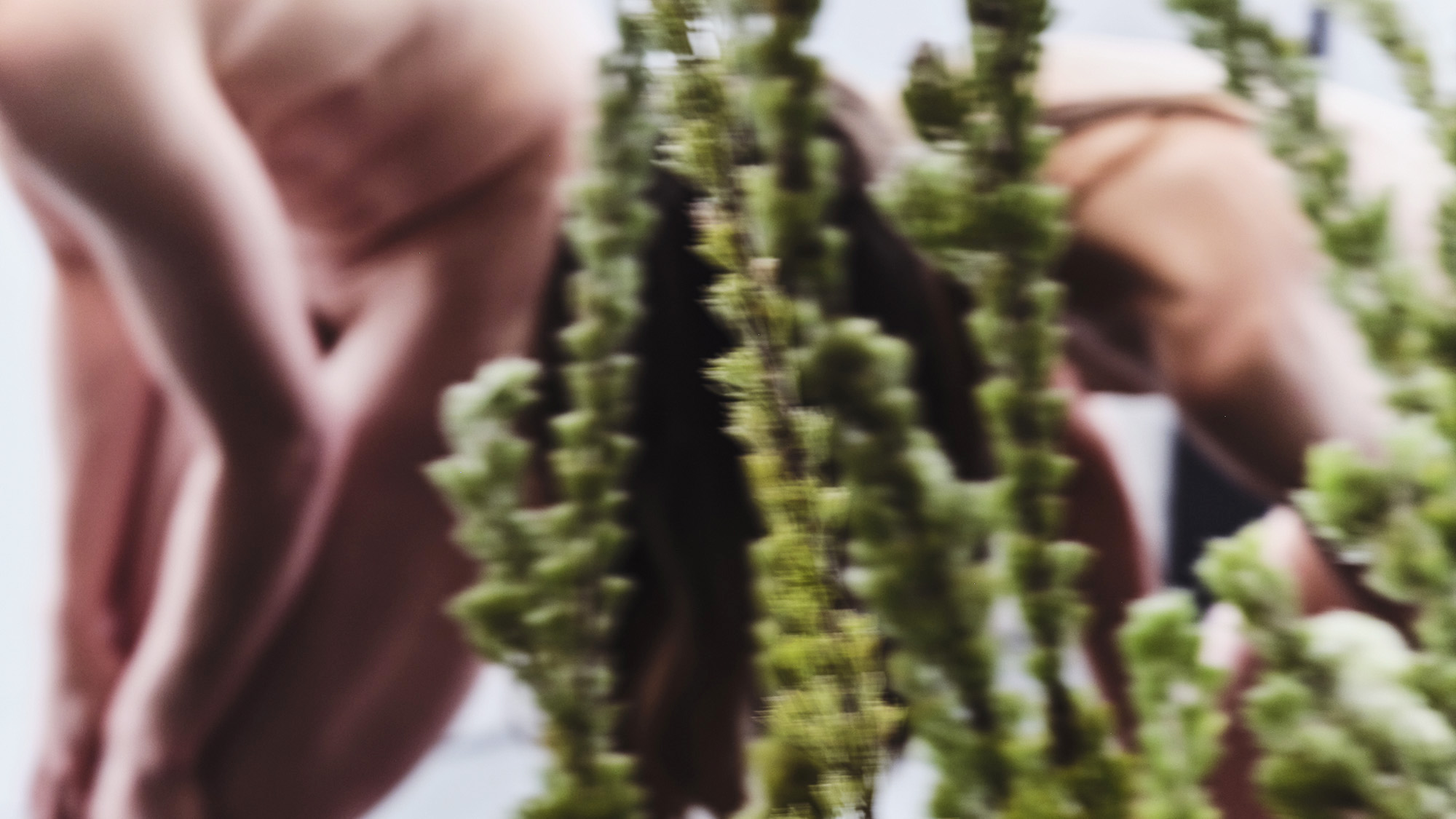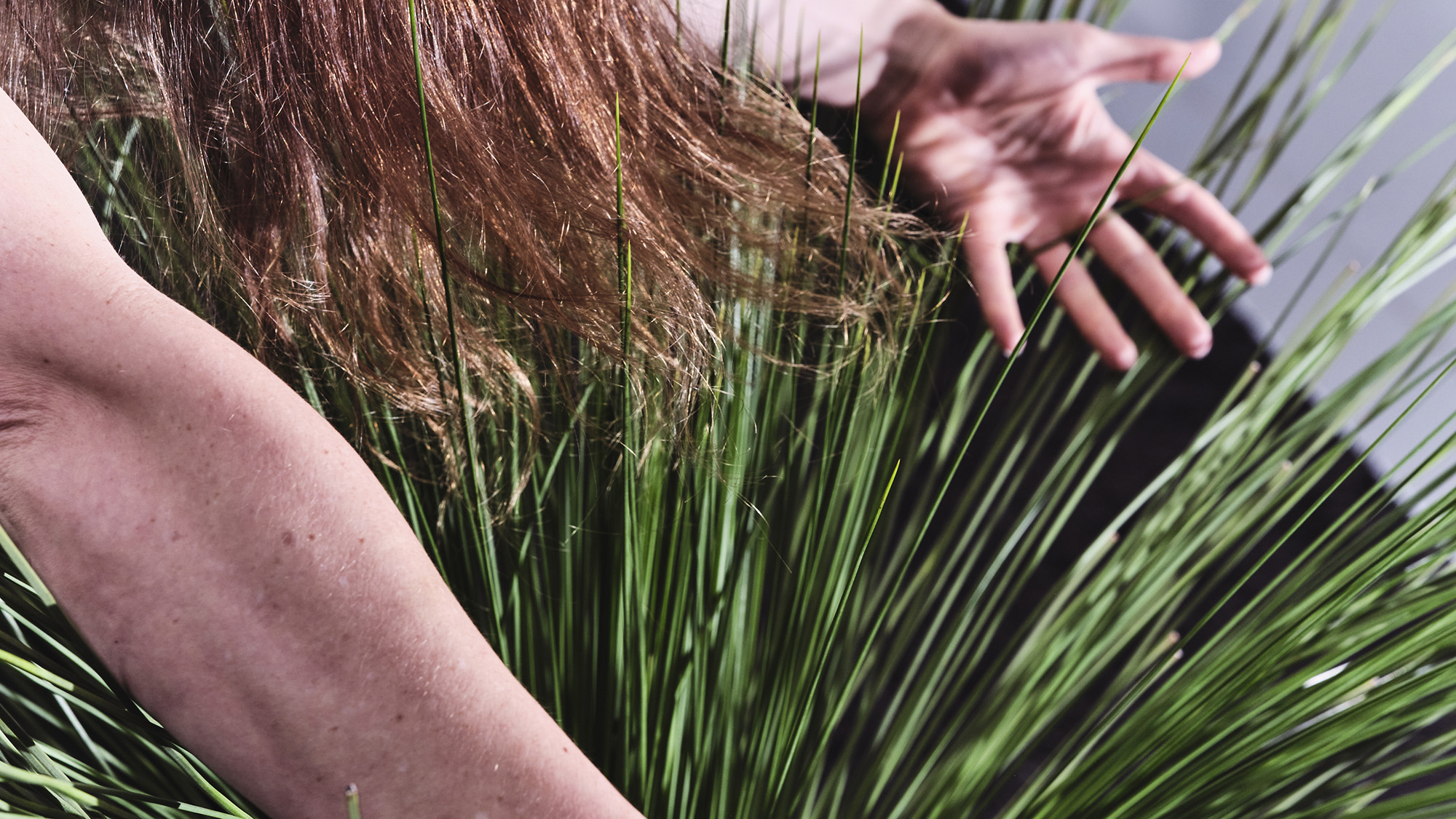Dance Grass Dance Tree 舞草舞木2024. Commissioned by the Art Gallery of Western Australia and Simon Lee Foundation Institute of Contemporary Asian Art. |
Dance Grass Dance Tree 舞草舞木 is a performance by Zheng Bo that cultivates intimate human-plant relationships. In doing so, Zheng seeks to provide a positive counter to global crises of the economy, security, health and migration that have triggered cascading systemic shocks and generated a state of profound anxiety.Zheng and choreographer Tyrone Earl Lraé Robinson collaborated with two dancers and five Western Australian plants. Set atop a sparsely populated garden located inside a modern gallery space, the dance unfolds within a setting that isolates and elevates the presence of each plant. This garden-come-stage emphasises the preciousness of each plant and the precarity of their, and our shared existence.Their work Dance Grass Dance Tree 舞草舞木 draws on the notion of ‘making kin’ to consider how all of the Earth’s life forms are bound to fragile ecologies. To be kin with the surrounding plants is to have an enduring relatedness that is mutual, obligatory, accountable and pleasurable. As the piece unfolds the beauty of sensual interactions between humans and plants is brought into focus, with lines and shapes that gesture across difference and energetically play with multispecies flourishing. In this way, Zheng creates a speculative alternative – a possibility of living in a subjective, symbiotic way with other life forms. By excavating the roots of deeply entangled global structures this work considers how we might resist the extractive frameworks of our present moment, and come to view the ecological crisis as extending beyond human survival alone.To interact intimately with the grass and the trees requires a reconfiguration of how we get to know life forms different from ours. For pleasure is both a noun and a verb that holds a moral and an ethical dimension. Pleasure is slowly cultivated over time. It is reciprocal and requires sensitivity to the needs of the other. Pleasure is what enables us all to form meaningful, lasting attachments to others.As the performance suggests, building multiple alliances between people and plants might recompose what it means to be human. Let’s find ways of becoming world-together.(text by Rachel Ciesla)
Plant dancers:
|

